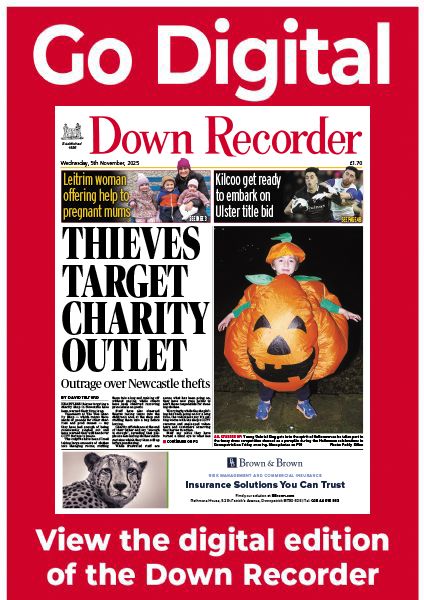The secrets of the castle
The secrets of the castle
10 July 2013
A RARE medieval lime kiln — thought to be the largest of its kind in Ireland — has been unearthed at Dundrum Castle.
An archaeological dig involving Queen’s University archaeologists and the Northern Ireland Environment Agency (NIEA) has uncovered the impressive remains, with the kiln thought to have been used to help build an early extension of the castle.
A stronghold of Norman knight John de Courcy, Dundrum Castle is around 800 years old, though the site was used for centuries before the stone castle was built.
The work carried out at Dundrum Castle expands on excavations carried out with Time Team last year, during which a kiln was thought to have been detected under the surface of the grassy hill leading up to the castle.
Around 25 people have been working at the DOE run site over the past month including 18 students and volunteer members of the Ulster Archaeological Society.
Philip Macdonald, from the Centre for Archaeological Fieldwork at Queen’s University Belfast, has been leading the dig alongside the NIEA’s Liam McQuillan.
He explained that lime kilns were used to extract quicklime from stones to create mortar, suggesting the kiln was used to extend the castle buildings at some point in its long history.
“It is certainly medieval,” said Philip. “Not the earliest phase but sometime between the 13th and 15th centuries.
“It’s an excellent find and rare to find one in this condition. We think it is the biggest in Ireland.”
With a depth of four metres 20 centimetres excavated so far, Philip said it had been a difficult job for the archaeologists.
“Physically it is a bit demanding hoisting stuff out of there,” he said. “The presence of clay indicates this was a temporary structure used during one of the different phases of construction in the castle.”
Philip said he hoped the rare find would lead to a better understanding of the castle’s history and provide a better interpretative experience for future visitors.
“It has caused a lot of interest locally and we have been showing people around as well as a number of American and Australian tourists,” said Philip.
“One of the things we want to achieve is to make the most of the heritage in small towns such as Dundrum with a view to boosting tourism numbers. “We want to stop people just driving through the town on their way to Newcastle and support the local economy.”
Aside from the kiln itself, the site itself has been revealing various buried artefacts, such as the pot handle dating from the 13th to 14th centuries found on Friday.
One of the Queen’s archaeology students playing her part in digging up the past is Hannah Parker from Ballynahinch.
On her first big dig, the second year student said it wasn’t quite as back breaking as she would thought it would be.
“It’s really good to get out of lecture room and dig outside,” she said. “I wasn’t sure what to expect, but we knew what we were looking for.
“The grass was cut with mattocks here and there has been the danger of things falling in.
“We’re part of a small group and it has been really, really good to do.
“There has been a lot of public interest — there were 170 school pupils to take round one day — and it has been really encouraging for me as a student.”
Environment Minister Alex Attwood said Dundrum Castle, with its views over Dundrum Bay to the Mourne Mountains, was a wonderful testament to built and natural heritage.
“New light has been shed on what existed at this important site before the coming of the Normans and adds to our knowledge of this historic site and its development over the centuries,” he said.
“It is important that we maximise the opportunity to unveil as much of our rich heritage as possible. The discoveries now being made at Dundrum Castle will further shape our understanding of the past, and enhance the visitor experience at the site.
“All of these provide important snap shots of the past and further enrich our fascinating history making them tourist magnets. The built and natural heritage will be the biggest part of future increases in tourist numbers and spend — an essential element of our economy and jobs.”


